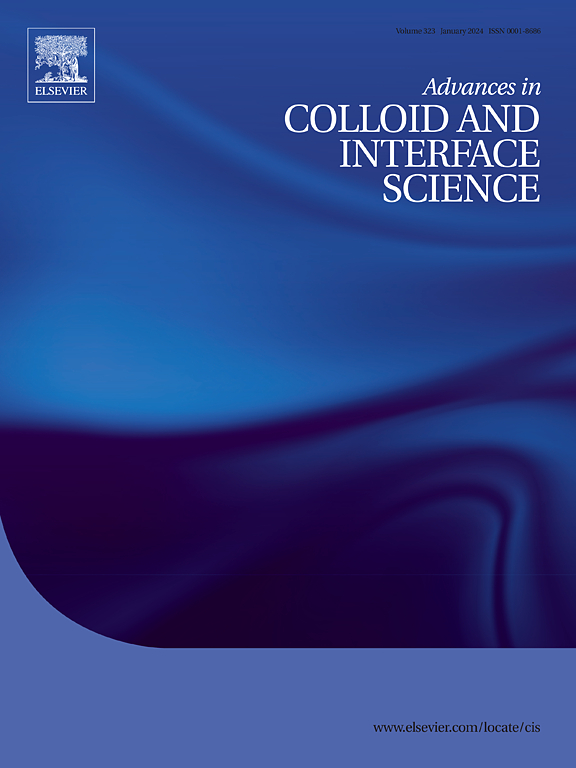植物性鲜奶油:一种有前途的可持续乳制品替代品
IF 15.9
1区 化学
Q1 CHEMISTRY, PHYSICAL
引用次数: 0
摘要
未来食品致力于改变食品行业的传统生产模式,使人类和地球更健康,解决人类面临的挑战。发展植物性食品是未来食品的核心内容之一,是实现食品工业绿色低碳发展的重要途径。乳品行业的主流食品趋势是开发各种基于植物的乳制品替代品的需求。植物鲜奶油是一种复杂的乳泡体系,可以通过搅拌从油包水的乳液结构转变为三相(固液气)泡沫结构,在乳液稳定性、搅拌失稳和泡沫再稳定之间要达到微妙的平衡。本文旨在了解植物性鲜奶油发展的科学技术基础。最初的重点是植物性鲜奶油的稳定和不稳定的基本原理,因为成功产品的开发取决于对其物理化学基础的理解。然后介绍了制造植物性鲜奶油的三种主要加工技术:均质、灭菌和回火。此外,重点介绍了植物性鲜奶油的基本成分,包括植物脂肪、植物蛋白、低分子乳化剂和增稠剂。为了量化和比较标准化条件下不同植物性鲜奶油产品的质量属性,我们概述了评估植物性鲜奶油乳液稳定性、鲜奶油不稳定性和泡沫再稳定性的表征方法。随后,介绍了与植物性鲜奶油产品相关的立法法规,以适应其市场发展。最后,强调了目前植物性鲜奶油面临的挑战。本文旨在为相关行业的研究人员和生产厂家提供指导。本文章由计算机程序翻译,如有差异,请以英文原文为准。

Plant-based whipping cream: A promising sustainable alternative to dairy products
Future food is dedicated to transforming the traditional production model of the food industry, making people and the planet healthier, and addressing the challenges facing humanity. The development of plant-based foods is one of the core contents of future food and an important way to achieve green and low-carbon development of the food industry. A prevailing food trend in the dairy industry is the demand to develop various plant-based alternatives to dairy products. Plant-based whipping cream is a complex emulsion-foam system that can be transformed from an oil-in-water emulsion structure to a triphasic (solid-liquid-gas) foam structure by whipping, which should achieve a subtle balance between emulsion stability, whipping destabilization, and foam re-stabilization. This review aims to understand the science and technology underlying the development of plant-based whipping cream. The initial focus is on the fundamental principle of stabilization and destabilization of plant-based whipping cream, as the development of successful products depends on understanding their physicochemical basis. Three main processing technologies for the manufacture of plant-based whipping cream are then introduced: homogenization, sterilization, and tempering. Besides that, the role of the basic ingredients in plant-based whipping cream is highlighted, including vegetable fats, plant proteins, low-molecular-weight emulsifiers, and thickeners. In order to quantify and compare the quality attributes of different plant-based whipping cream products under standardized conditions, we provide an overview of characterization methods to evaluate emulsion stability, whipping destabilization, and foam re-stabilization of plant-based whipping cream. Subsequently, the legislations and regulations related to plant-based whipping cream products are introduced to cater to their market development. Finally, the current challenges faced by plant-based whipping cream are highlighted. This review aims to provide a guidance for researchers and manufacturers in related industries.
求助全文
通过发布文献求助,成功后即可免费获取论文全文。
去求助
来源期刊
CiteScore
28.50
自引率
2.60%
发文量
175
审稿时长
31 days
期刊介绍:
"Advances in Colloid and Interface Science" is an international journal that focuses on experimental and theoretical developments in interfacial and colloidal phenomena. The journal covers a wide range of disciplines including biology, chemistry, physics, and technology.
The journal accepts review articles on any topic within the scope of colloid and interface science. These articles should provide an in-depth analysis of the subject matter, offering a critical review of the current state of the field. The author's informed opinion on the topic should also be included. The manuscript should compare and contrast ideas found in the reviewed literature and address the limitations of these ideas.
Typically, the articles published in this journal are written by recognized experts in the field.

 求助内容:
求助内容: 应助结果提醒方式:
应助结果提醒方式:


